Trees Birds Mammals Fish Amphibians Reptiles
Wild Algarve
Bookshop
Inocybe geophylla var. lilacina (Peck) Gillet - Lilac Fibrecap
Phylum: Basidiomycota - Class: Agaricomycetes - Order: Agaricales - Family: Inocybaceae
Distribution - Taxonomic History - Etymology - Identification - Toxicity - Reference Sources
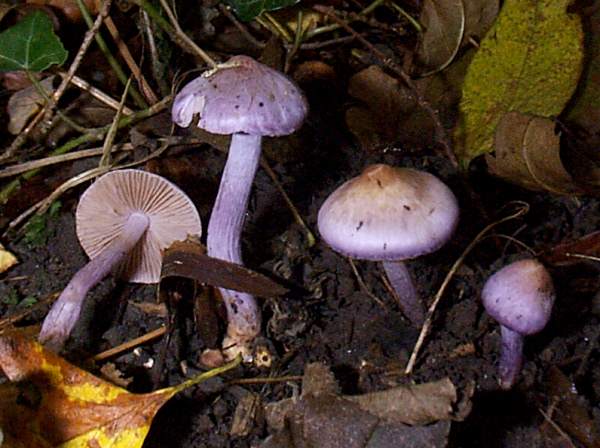
Inocybe geophylla is a very common species and
its white variety is sometimes mistaken for small field mushrooms (Agaricus campestris)
with disastrous results: it is very poisonous and its consumption can be
fatal.
Although it is known to be mycorrhizal with deciduous broadleaf trees and with conifers, this little lilac-coloured mushroom is also a very common find on damp disturbed roadside mud that is rich in leaf litter.
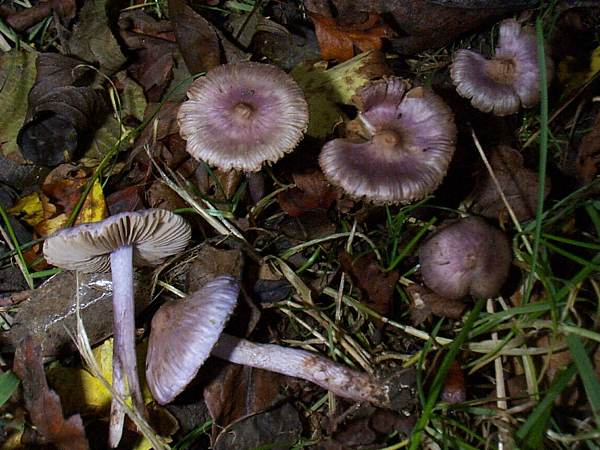
Distribution
Inocybe geophylla var. lilacina is a common and widespread woodland species throughout Britain and Ireland. These toxic little toadstools are found in most parts of mainland Europe, and they are also recorded as common in North America.
Taxonomic history
This poisonous mushroom owes its scientific basionym to American mycologist Charles Horton Peck (1833 - 1917) who, in 1873, gave it the scientific name Agaricus geophyllus var. lilacinus. Three years later, in 1876, French mycologist Claude-Casimir Gillet (1806 - 1896) renamed it Inocybe geophylla var. lilacina, its currently-accepted scientific name.
Synonyms of Inocybe geophylla var. lilacina include Agaricus geophyllus Sowerby, Gymnopus geophyllus (Pers.) Gray, Agaricus geophyllus var. violaceus Pat., Inocybe geophylla var. violacea (Pat.) Sacc., and Inocybe lilacina (Peck) Kauffman.
Toxicity
Inocybe geophylla is a deadly poisonous and fairly common species that grows in habitats where people expect to find edible mushrooms. That makes it very dangerous indeed. The symptoms of poisoning by this and several similar Inocybe species are those associated with muscarine poisoning. Excessive salivation and sweating set in within half an hour of eating these fungi. Depending on the amount consumed, victims may also suffer abdominal pains, sickness and diarrhoea, together with blurred vision and laboured breathing. Deaths of otherwise healthy people from eating these fungi are not reported. Anyone with a weakened heart or with respiratory problems is much more at risk. The lilac variety is no less toxic that its white close relative; it is a deadly poisonous mushroom and care is needed to ensure that this toxic toadstool is never included among other violet or purplish fungi (such a Lepista nuda, the Wood Blewit) that are being collected for human consumption.
Etymology
Inocybe, the genus name, means 'fibrous head', while the specific epithet geophylla is derived from the Ancient Greek words geo- meaning earth, and phyllon which means leaf. It hardly needs mentiolning that the variety name lilacina is a reference to the lilac colouring on the caps of these little mushrooms.
Identification guide
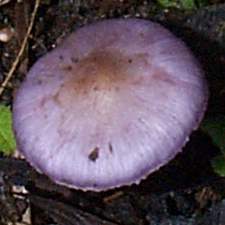 |
Cap
The smooth, silky cap has a diameter of 1.5 to 3.5cm; initially
conical, it flattens as it matures, usually retaining a pointed
umbo and streaky radial fibres that in dry weather tend to tear into
strips towards the edge of the cap. The cap is initially lilac but
fade to ochre-brown from the centre as the fruitbody ages. |
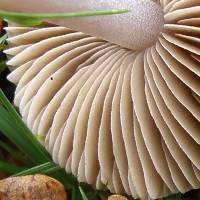 |
Gills
The crowded gills, which are notched or
adnexed, start off creamy-grey and later turn clay-brown as the spores
mature.
Stem
3 to 6mm in diameter and up to 6cm tall,
the stipe is smooth and silky, sometimes slightly fibrillose towards the
base, and the same colour as the cap. The stipe also gradually turns
clay-brown with age. |
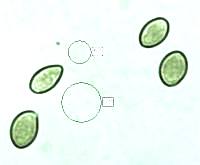 |
Spores
Ellipsoidal, smooth, 7.5-10 x 4.5-5.5μm.
Spore print
Dull brown.
|
Odour/taste |
Slightly earthy or mealy smell. Reported to
have a mild taste (but please be aware that this is a deadly poisonous
fungus and so tasting any part of it is not advisable). |
Habitat & Ecological role |
Beside paths and on roadside verges beneath
deciduous trees and in mixed woodland; less frequently under conifers. |
Season |
Summer and autumn. |
Similar species |
Amethyst Deceiver, Laccaria
amethystina has violet gills but is otherwise very similar in
appearance to Inocybe geophylla var. lilacina. |
Reference Sources
Fascinated by Fungi, 2nd Edition, Pat O'Reilly 2016, reprinted by Coch-y-bonddu Books in 2022.
Alan Outen and Penny Cullington (2009), Keys to the British Species of Inocybe.
Funga Nordica: 2nd edition 2012. Edited by Knudsen, H. & Vesterholt, J. ISBN 9788798396130
BMS List of English Names for Fungi
Dictionary of the Fungi; Paul M. Kirk, Paul F. Cannon, David W. Minter and J. A. Stalpers; CABI, 2008
Taxonomic history and synonym information on these pages is drawn from many sources but in particular from the British Mycological Society's GB Checklist of Fungi.
Top of page...
Fascinated by Fungi. Back by popular demand, Pat O'Reilly's best-selling 450-page hardback book is available now. The latest second edition was republished with a sparkling new cover design in September 2022 by Coch-y-Bonddu Books. Full details and copies are available from the publisher's online bookshop...